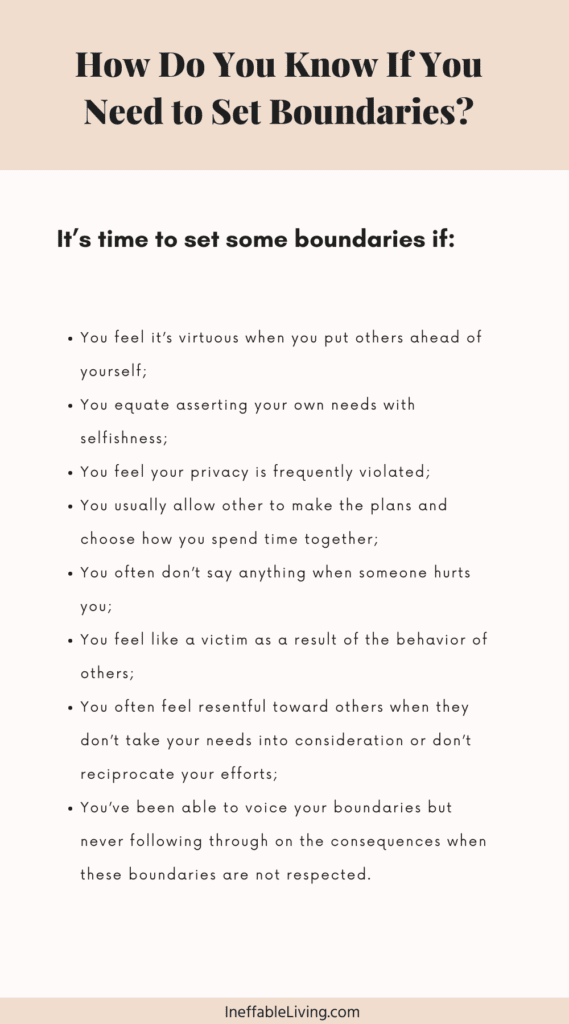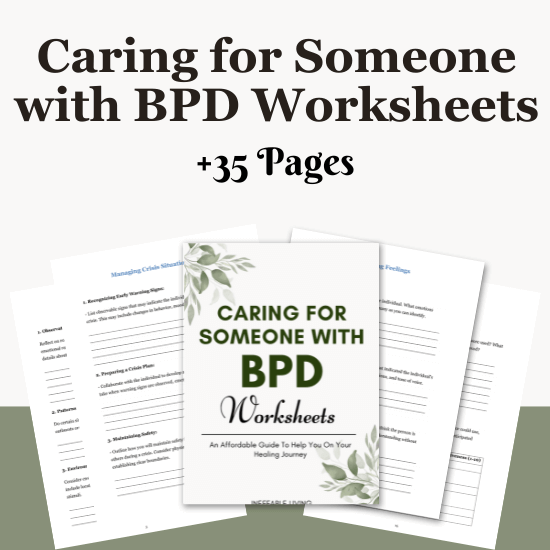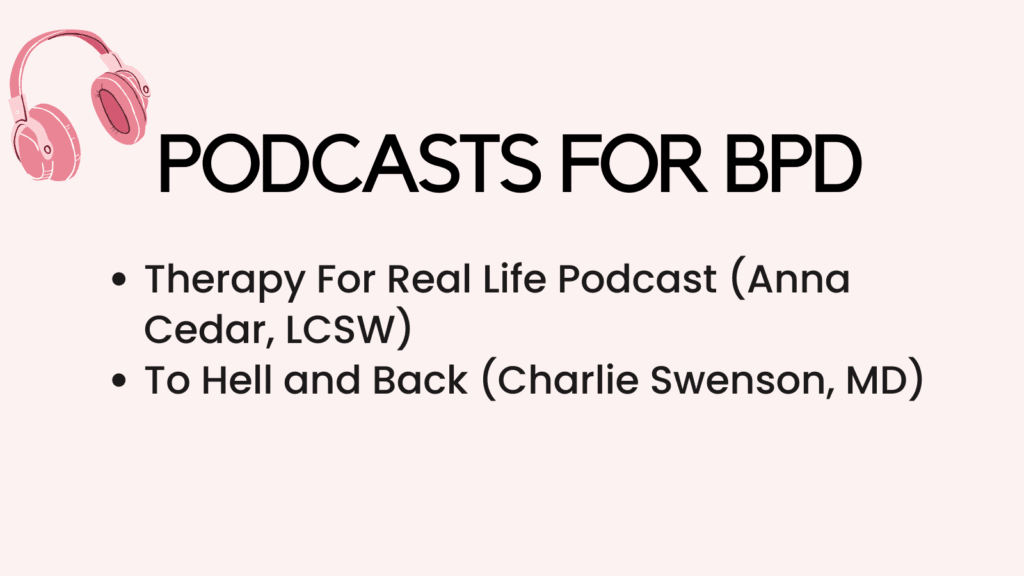Saying no to someone with borderline personality disorder can be tricky.
It can trigger intense reaction or “BPD episode” and bring about intense feelings of anger, fear, suicidal thoughts and self-harm, or very impulsive decisions.
This may even affect your self-esteem and trigger feelings of guilt and self-blame.
On a conscious level, you may realize that you’re not doing anything to deserve this treatment, but over time, you may have come to accept that you’re somehow to blame for the distress they feel.
What Is BPD?
The clinician’s “bible,” the Diagnostic and Statistical Manual lists 9 symptoms and features of BPD:
1. Chronic feelings of emptiness.
2. Emotional instability in reaction to day-to-day events (e.g., intense episodic sadness, irritability, or anxiety usually lasting a few hours and only rarely more than a few days)
3. Frantic efforts to avoid real or imagined abandonment
4. Identity disturbance with markedly or persistently unstable self-image or sense of self
5. Impulsive behavior in at least two areas that are potentially self-damaging (e.g., spending, sex, substance abuse, reckless driving, binge eating)
6. Inappropriate, intense anger or difficulty controlling anger.
7. Pattern of unstable and intense interpersonal relationships characterized by extremes between idealization and devaluation (also known as “splitting”)
8. Recurrent suicidal behavior, gestures, or threats, or self-harming behavior
9. Transient, stress-related paranoid ideation or severe dissociative symptoms.
Related: Top 7 Skills For Coping With BPD [+ BPD FREE Resources]
How BPD Affects Relationships
Borderline Personality Disorder (BPD) can have a significant impact on relationships in several ways.
People with BPD often have intense and unstable emotions, experience strong feelings of abandonment, struggle with self-image, and have difficulty regulating their emotions.
Some of the ways BPD may affect relationships include:
1. Fear of abandonment: Individuals with BPD may have an intense fear of abandonment that can lead them to act out in ways that are harmful to the relationship. This may include extreme emotional reactions to any perceived threat of rejection or abandonment.
2. Intense reactions: People with BPD may have intense emotional reactions to everyday situations, which can be difficult for their partners to understand and manage. This can lead to conflicts and misunderstandings that strain the relationship.
3. Impulsive behaviors: Individuals with BPD may engage in impulsive and reckless behaviors such as binge eating, substance abuse, or risky sexual behavior. These behaviors can negatively impact the relationship, causing tension and emotional stress.
4. Unstable sense of self: People with BPD may struggle with a stable sense of self, which can make it difficult for them to identify and communicate their needs and desires in a relationship. This can create confusion and uncertainty for their partner.
5. Distrust: Individuals with BPD may struggle with trust issues, making it difficult for them to form and maintain healthy relationships. They may perceive their partner’s actions as threatening, leading to mistrust and difficulty building intimacy.
The Challenges of Saying No To Someone With BPD
Saying “no” to someone with BPD can be challenging and may trigger intense emotional reactions in them.
Here are some examples of challenges one might face when trying to say no to someone with BPD:
1. Fear of abandonment: People with BPD often have a heightened fear of abandonment, which can make them very sensitive to rejection. Saying “no” to them may trigger feelings of rejection and abandonment, leading to emotional outbursts or even self-harm.
2. Emotional intensity: People with BPD often experience intense emotions that can escalate quickly. Saying “no” to someone with BPD may trigger their emotional intensity and cause them to become angry, sad or anxious.
3. Manipulation: People with BPD may use manipulation tactics such as guilt-tripping or emotional blackmail to get what they want. Saying “no” may trigger these manipulative behaviors, making it difficult to stand firm on your decision.
4. Difficulty communicating boundaries: People with BPD often struggle with setting and respecting boundaries. Saying “no” to them may require clear communication and assertiveness, which can be challenging if they are not accustomed to hearing “no”.
5. Fear of retaliation: In some cases, saying “no” to someone with BPD may lead to retaliatory behavior such as threats or aggression. This can create a sense of danger or unease, making it even more challenging to say no.
Saying No To Someone With Borderline Personality Disorder
BPD is marked by an intense fear of abandonment.
This is why being told “no” can be perceived as rejection or abandonment and set off an overwhelming wave of negative emotions of fear, inadequacy, and even rage.
The person with BPD may go a long way to avoid the real or perceived abandonment by pushing you away or by pushing your buttons.
Here are some tips to help you say no in a gentle and compassionate way:
1. Be clear and direct
When saying no, it’s important to be clear and direct without being cruel or dismissive.
Make sure your message is straightforward and easy to understand.
2. Practice empathy
Try to understand the emotions of the person with BPD without taking their behavior personally.
Remember that their behavior is not a reflection of you.
3. Acknowledge their feelings
BPD individuals often have intense emotions that can feel overwhelming.
Acknowledge their feelings and let them know you understand how difficult it can be for them to hear no.
4. Offer support
Even if you can’t say yes to their request, you can still offer support.
Let them know that you care about them and that you are there to help in any way you can.
5. Avoid triggering language
Certain words or phrases can trigger intense emotions in someone with BPD.
Use language that is neutral and non-judgmental to avoid triggering any negative reactions.
Related: Borderline Personality Disorder Support Group
What Are BPD Triggers?
Being told no is not the only thing that can trigger a BPD episode. The following is a list of common BPD triggers:
- A backhanded comment
- Not being invited to an event
- Being reminded of a past trigger
- Canceled plans
- Having their ideas rejected
- Delayed response to a text or not getting a text back at all
- Rejecting their help or support
Related: Best 20 Tips On Dating Someone With BPD Without Becoming A Caretaker

How To Set Boundaries With Someone With BPD?
It might seem that almost anything can trigger someone with borderline personality disorder.
However, that doesn’t mean you need to walk on eggshells, bend over backwards to appease them and never say no.
In fact, it’s healthy to set emotional boundaries in relationships.
But it’s easier to set boundaries when the person with BPD is aware of their fear of abandonment and its triggers and is willing to work on themselves and the relationship.
1. Recognize Their Wounded Inner Child
When the person with BPD is triggered, they’re no longer acting from an adult standpoint, rather they regress into the state of a wounded child.
When you see the wounded child and recognize the unmet needs triggering their intense reaction, you’ll find it easier to feel compassion and be the bigger person.
Related: Emotional Permanence (What Is It & Top 4 Tips On How To Cope With Emotional Permanence Deficit?)
2. Validate Their Feelings, Not Their Behaviors
When the person with BPD is having a difficult time accepting your boundary, acknowledge their painful emotions.
That is, communicate your understanding what they’re feeling or thinking and what triggered those in a non-judgmental way.
Remind yourself that there are no right or wrong when it comes to feelings.
FREE Validating Statements Worksheet
Related: How To Validate Someone’s Feelings Without Agreeing? (+Examples of Validating Statements)
3. Set Kind But Firm Boundaries
You may not be able to communicate your boundaries in the heat of the moment.
But when they are calmer and in their adult mode, clearly communicate your needs and boundaries and come up with a plan that honors both your needs and theirs.
Related: Healthy Boundaries Quiz (+Free Pdf Worksheets)
4. Seek Professional Help
Couples therapy can help you learn strategies to communicate your boundaries in ways that don’t trigger your loved one.
It can also help the person with BPD defuse what feelings belong within themselves and what pertains to the actual relationship. That way, they learn to recognize their feelings and let go of projecting on to their partner.
Psychologist Locator and the National Register are two websites for locating psychologists in the USA.

Self-Care When Dealing With Someone With BPD
Here are some self-care tips to help you cope:
1. Take breaks
It’s important to give yourself space and time to recharge your own emotional battery.
Take breaks whenever you feel overwhelmed or stressed.
2. Engage in activities that bring you joy
Take care of your physical and emotional needs by engaging in activities that bring you joy and peace.
This could include exercise, hobbies, spending time with loved ones, or just taking time to relax.
3. Seek support
Consider seeking professional help or counseling to help manage your own emotions and stress levels.
Remember that taking care of yourself is essential when dealing with someone with BPD.
By practicing self-care, you can maintain your own mental and emotional well-being while supporting your loved one with BPD.

Conclusion
Saying “no” to someone with BPD may be difficult as they may struggle with rejection and abandonment issues.
However, it is crucial to communicate your needs clearly and respectfully.
Remember to take care of yourself first and foremost, and seek support if you need it.
It is important to note that while BPD can make relationships challenging, it is possible for individuals with BPD to have successful and fulfilling relationships with proper treatment and support.
References
- Portions of this article were adapted from the book Diagnostic and Statistical Manual of Mental Disorders, Fifth Edition, Text Revision (DSM-5-TR), © 2021 by the American Psychiatric Association. All rights reserved.



![BPD Support Groups [Online & In-Person]](https://ineffableliving.com/wp-content/uploads/2022/09/Borderline-Personality-Disorder-Support-Group-1024x576.png)